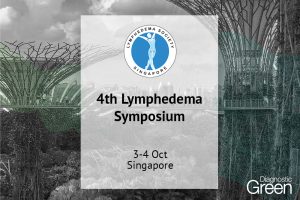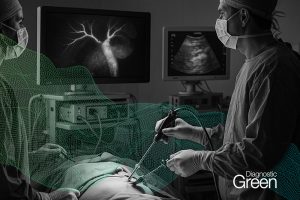Authors: Francisco A. Ferri, MD; Felice De Stefano, MD; Vicente J. Cogollo, MD; Alejandro Cracco, MD; Emanuele Lo Menzo, MD, PhD, FACS, FASMBS; Mayank Roy, MD, FACS; Fernando Dip, MD, FACS. Department of General Surgery and the Bariatric and Metabolic Institute, Cleveland Clinic Florida.
Summary: Bile duct injuries during laparoscopic cholecystectomy remain a potentially devastating complications and are responsible for major morbidity and prolonged hospitalization1. Visual misperception, anatomical variations in the extrahepatic biliary tree, combined with inflammatory changes and surgeon inexperience in recognizing the anatomy, are among the most common reasons for these injuries2. Near-infrared Incisionless Fluorescent Cholangiography (NIFC) has been shown to improve the visualization and identification of the biliary structures compared to traditional white light3-5
Patient Background: The following case study discusses a 37 years old, morbidly obese woman (BMI 43 Kg/m2) with impaired fasting glucose and no significant surgical history who presented to the clinic with a 3-month history of right upper quadrant (RUQ) abdominal pain, especially after meals. The physical exam revealed tenderness in the RUQ with a negative Murphy sign and no evidence of peritonitis. An ultrasound showed a 3.8 cm gallstone (Figure 1) without gallbladder wall thickening and hepatic steatosis. Esophagogastroduodenoscopy did not reveal any pathologic findings. The patient was referred to the bariatric surgery clinic for evaluation in view of her elevated BMI and her comorbidity. After discussing surgical options, the patient elected to undergo a combined laparoscopic sleeve gastrectomy and cholecystectomy using NIFC.
Procedure: Under general anesthesia, the abdominal cavity was accessed through an optical trocar in the supraumbilical position. After insertion of accessory trocars, a sleeve gastrectomy was performed in standard fashion. Next, 3mL of Indocyanine green for Injection, USP (ICG) were injected
intravenously. The gallbladder was cranially retracted. The hepatoduodenal ligament was exposed. Using near-infrared imaging we identified the ICG perfusion times of the liver, common hepatic duct and gallbladder at 1, 12 and 22 minutes after the injection of the ICG, respectively (Figures 2-4).
The cystic duct and cystic artery entrance into the gallbladder were both clearly identified (Figure 5) and transected between clips. The very large and chronically inflamed gallbladder was excised from the liver bed in retrograde fashion and retrieved with the specimen through the umbilicus. All trocar sites were closed with sutures and injected with local anesthesia.
For conclusions and references please download the full case study at our resource center




